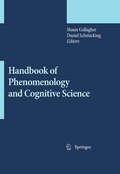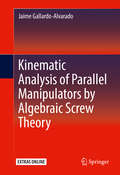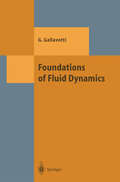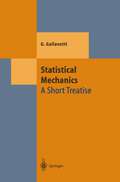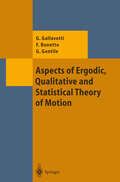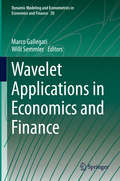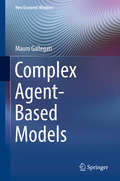- Table View
- List View
Current Practice in Forensic Medicine
by John A. M. Gall Jason Payne-JamesForensic medicine is a broad and evolving field with areas of rapid progress embracing both clinical and pathological aspects of practice, in which there may be considerable overlap. This is the second volume in a series that provides a unique, in-depth and critical update on selected topics of direct relevance to those practising in the field of clinical forensic medicine and related areas including lawyers, police, medical practitioners, forensic scientists, and students. The chapters endeavour to maintain a relevance to an international, multi-professional audience and include chapters on: DNA decontamination, The toxicity of novel psychoactive substances, The relevance of gastric contents in the timing of death, The effects of controlled energy devices, The main risk factors for driving impairment, The risk factors for harm to health of detainees in short-term custody, Autoerotic deaths, Child maltreatment and neglect, and The investigation of potential non-accidental head injury in children. Also included are chapters on excited delirium syndrome, automatism and personality disorders. Two topics not generally covered in standard clinical forensic medical textbooks include a forensic anthropological approach to body recovery in potential crimes against humanity and risk management and security issues for the forensic practitioner investigating potential crimes against humanity in a foreign country.
Current Practice in Forensic Medicine, Volume 3
by John A. M. Gall Jason Payne-JamesCURRENT PRACTICE in Forensic Medicine Presents a unique overview and critical commentary on the latest developments in forensic medical practice worldwide The field of forensic medicine continues to evolve worldwide. In recent years, the amount of research has increased and new areas of forensic specialization have developed. Forensic practitioners need to keep pace with a range of international advances from innovative technologies to new or revised laws and regulations to emerging issues of controversy. Current Practice in Forensic Medicine, Volume 3 provides an in-depth examination of key areas of the field. This timely and comprehensive resource addresses consent for forensic procedures, imaging for soft tissue injuries, working with victims of torture, non-accidental injury in the elderly, medical and toxicological aspects of chemical warfare, non-fatal strangulation, abusive head trauma in young children, and more. Each chapter contains a general overview of the area under discussion, references to published literature, and detailed discussion of significant changes and key points. Offers new insights into false allegations of sexual assault, coercive control and the homicide timeline in partner abuse cases, and the needs of elderly persons in detention Provides non-country specific information to guide international forensic medicine practitioners and healthcare professionals Contains detailed yet concise chapters written by authors with particular expertise in the subject covered Addresses the clinical and pathological aspects of forensic medicine and relevant areas in toxicology, forensic psychiatry and psychology, and forensic biology Covers riot control weapons, chemical warfare, non-fatal strangulation, DNA in crime detection, and many other essential topics Includes up-to-date information on the new Medical Examiner system in England and Wales Supported by the most recent evidence-based research, Current Practice in Forensic Medicine, Volume 3 is a must-have for all those involved in various aspects of forensic medicine including doctors, dentists, forensic scientists, lawyers, law enforcement professionals, and forensic practitioners.
Current Practice in Forensic Medicine
by John Gall Jason Payne-JamesAlthough forensic medicine has been in existence for centuries in one guise or another, it is only with the recent growth in international research that it has begun to be acknowledged as a specific discipline in its own right. Many areas of progress are being made and this text aims to provide a unique, in-depth and critical update on selected topics that are of direct relevance to those practicing in the field including lawyers, police, medical and dental practitioners, forensic scientists and postgraduate/undergraduate medical students and undergraduate law students preparing for forensic medicine examinations. This volume is designed to cover the wider aspects of forensic medicine, including the law, science, medicine (forensic pathology, clinical forensic medicine and forensic psychiatry) and dentistry. Topics covered include subjects of debate and/or uncertainty in areas where significant advances have been made and in those of current relevance to the forensic profession, Chapters provide a variety of approaches to the areas under discussion with reviews of current knowledge, information on significant changes and pointers to the future that the reader should be aware of. Features: An authoritative review, for forensic medicine practitioners throughout the world, from leading international experts in the field. Provides critical commentary and updates on current practice. Topics include: a guide to the presentation of forensic medical evidence, bioterrorism, the paediatric hymen, assessment and interpretation of bone trauma in children, adult sexual assault, genital photography, forensic photography, common errors in injury interpretation, self-inflicted injuries and associated psychological profiles, bite marks and the role of the pathologist in aviation disasters. Includes a wealth of four colour figures to illustrate key points discussed within the text.
Sustainable Urban Mobility Futures (Sustainable Urban Futures)
by Tjark Gall Flore Vallet Laura Reyes Madrigal Sebastian Hörl Adam Abdin Tarek Chouaki Jakob PuchingerThis book provides a unique perspective on urban mobility focusing on past challenges and future trends. The book enables discussions of pathways towards sustainable and people-centred urban mobility building on existing concepts and introducing novel methods and consideration of future research. In particular, the book provides an overview of trends, design methods, and projects combining foresight and agent-based modelling to better integrate active mobility in Mobility-as-a-Service, assess impacts of automated vehicles in Paris, and compare multiple solutions in Cairo. The book provides a range of multidisciplinary concepts and methods that will be invaluable to both researchers in the field and students taking relevant courses.
Religious Studies Skills Book: Close Reading, Critical Thinking, and Comparison
by Eugene V. Gallagher Joanne MaguireStudying religion in college or university? This book shows you how to perform well on your course tests and examinations, write successful papers, and participate meaningfully in class discussions. You'll learn new skills and also enhance existing ones, which you can put into practice with in-text exercises and assignments. Written by two award-winning instructors, this book identifies the close reading of texts, material culture, and religious actions as the fundamental skill for the study of religion at undergraduate level. It shows how critical analytical thinking about religious actions and ideas is founded on careful, patient, yet creative “reading” of religious stories, rituals, objects, and spaces. The book leads you through the description, analysis, and interpretation of examples from multiple historical periods, cultures, and religious traditions, including primary source material such as Matthew 6:9-13 (the Lord's Prayer), the gohonzon scroll of the Japanese new religion Soka Gakkai, and the pilgrimage to Mecca (hajj). It provides you with typical assignments you will encounter in your studies, showing you how you might approach tasks such as reflective, interpretive or summary essays. Further resources, found on the book's website, include bibliographies, and links to useful podcasts.
Religious Studies Skills Book: Close Reading, Critical Thinking, and Comparison
by Eugene V. Gallagher Joanne MaguireStudying religion in college or university? This book shows you how to perform well on your course tests and examinations, write successful papers, and participate meaningfully in class discussions. You'll learn new skills and also enhance existing ones, which you can put into practice with in-text exercises and assignments. Written by two award-winning instructors, this book identifies the close reading of texts, material culture, and religious actions as the fundamental skill for the study of religion at undergraduate level. It shows how critical analytical thinking about religious actions and ideas is founded on careful, patient, yet creative “reading” of religious stories, rituals, objects, and spaces. The book leads you through the description, analysis, and interpretation of examples from multiple historical periods, cultures, and religious traditions, including primary source material such as Matthew 6:9-13 (the Lord's Prayer), the gohonzon scroll of the Japanese new religion Soka Gakkai, and the pilgrimage to Mecca (hajj). It provides you with typical assignments you will encounter in your studies, showing you how you might approach tasks such as reflective, interpretive or summary essays. Further resources, found on the book's website, include bibliographies, and links to useful podcasts.
A Neurophenomenology of Awe and Wonder: Towards a Non-Reductionist Cognitive Science (New Directions in Philosophy and Cognitive Science)
by Shaun Gallagher Bruce Janz Patricia Bockelman Jörg Trempler Lauren ReinermanThis book presents a study of the various feelings of awe and wonder experienced by astronauts during space flight. It summarizes the results of two experimental, interdisciplinary studies that employ methods from neuroscience, psychology, phenomenology and simulation technology, and it argues for a non-reductionist approach to cognitive science.
Handbook of Phenomenology and Cognitive Science
by Shaun Gallagher Daniel SchmickingThis volume explores the essential issues involved in bringing phenomenology together with the cognitive sciences, and provides some examples of research located at the intersection of these disciplines. The topics addressed here cover a lot of ground, including questions about naturalizing phenomenology, the precise methods of phenomenology and how they can be used in the empirical cognitive sciences, specific analyses of perception, attention, emotion, imagination, embodied movement, action and agency, representation and cognition, inters- jectivity, language and metaphor. In addition there are chapters that focus on empirical experiments involving psychophysics, perception, and neuro- and psychopathologies. The idea that phenomenology, understood as a philosophical approach taken by thinkers like Husserl, Heidegger, Sartre, Merleau-Ponty, and others, can offer a positive contribution to the cognitive sciences is a relatively recent idea. Prior to the 1990s, phenomenology was employed in a critique of the first wave of cognitivist and computational approaches to the mind (see Dreyfus 1972). What some consider a second wave in cognitive science, with emphasis on connectionism and neuros- ence, opened up possibilities for phenomenological intervention in a more positive way, resulting in proposals like neurophenomenology (Varela 1996). Thus, bra- imaging technologies can turn to phenomenological insights to guide experimen- tion (see, e. g. , Jack and Roepstorff 2003; Gallagher and Zahavi 2008).
Hazardous Waste Operations and Emergency Response Manual
by Brian J. GallantField technicians and emergency response personnel are often faced with the dangers of flammable, combustible, and chemically unstable materials. Although there are numerous procedures set forth by regulatory agencies like the Occupational Safety and Health Administration (OSHA), the Environmental Protection Agency (EPA), and the National Institute for Occupational Safety and Health (NIOSH) for effectively and safely dealing with such environmental hazards, up until now there has been no single resource for training in this area. Based on the author's twenty-plus years of field experience, Hazardous Waste Operations and Emergency Response Manual is a comprehensive text that covers the complete curriculum requirements set forth by OSHA and HazWOPER. Highly accessible and broad in focus, the book is equally useful as a technical resource for training, a hands-on reference for field operations, and a textbook for environmental courses in a variety of areas. Coverage includes:Methods recommended by professional societies and regulatory agencies including the National Fire Protection Association, OSHA, EPA, and NIOSHPractical examples and assignments in each chapter to supplement the text and enhance usefulness to students.
Renal Physiology and Hydrosaline Metabolism
by Pedro A. Gallardo Carlos P. VioThis volume discusses renal function and the mechanisms by which the kidney regulates the composition and volume of the extracellular fluid. It also highlights the role of the kidney in the development and progression of arterial hypertension. Most textbooks of renal physiology are based in mammalians physiology and mostly human physiology of the kidney, but the authors considered that this book should also include other species to include the broad spectrum of students and researchers in the life and biomedical sciences. In this sense, we included chapters such as comparative osmoregulation in non-mammalian vertebrates and we emphasize that in vertebrates like fish, reptiles, amphibians and birds, the kidneys and extrarenal organs are vital to maintain fluid homeostasis. The purpose of the book is to provide a concise frame of knowledge in a clear and direct language, of the renal function to medical and biological sciences students. In the context of normal renal function, we provide pathophysiological basis for chronic renal diseases and hypertension with the participation of renal vasoactive hormones. This book is used as textbook in several physiology courses for medical, nursing and biological sciences students at the Pontifical Catholic University of Chile, Finis Terrae University, Universidad San Sebastian as well as other universities.
Kinematic Analysis of Parallel Manipulators by Algebraic Screw Theory
by Jaime Gallardo-AlvaradoThis book reviews the fundamentals of screw theory concerned with velocity analysis of rigid-bodies, confirmed with detailed and explicit proofs. The author additionally investigates acceleration, jerk, and hyper-jerk analyses of rigid-bodies following the trend of the velocity analysis. With the material provided in this book, readers can extend the theory of screws into the kinematics of optional order of rigid-bodies. Illustrative examples and exercises to reinforce learning are provided. Of particular note, the kinematics of emblematic parallel manipulators, such as the Delta robot as well as the original Gough and Stewart platforms are revisited applying, in addition to the theory of screws, new methods devoted to simplify the corresponding forward-displacement analysis, a challenging task for most parallel manipulators.
The Elements of Mechanics (Theoretical and Mathematical Physics)
by Giovanni GallavottiThe word "elements" in the title of this book does not convey the implica tion that its contents are "elementary" in the sense of "easy": it mainly means that no prerequisites are required, with the exception of some basic background in classical physics and calculus. It also signifies "devoted to the foundations". In fact, the arguments chosen are all very classical, and the formal or technical developments of this century are absent, as well as a detailed treatment of such problems as the theory of the planetary motions and other very concrete mechanical problems. This second meaning, however, is the result of the necessity of finishing this work in a reasonable amount of time rather than an a priori choice. Therefore a detailed review of the "few" results of ergodic theory, of the "many" results of statistical mechanics, of the classical theory of fields (elasticity and waves), and of quantum mechanics are also totally absent; they could constitute the subject of two additional volumes on mechanics. This book grew out of several courses on meccanica razionaie, i.e., essentially, theoretical mechanics, which I gave at the University of Rome during the years 1975-1978.
The Fermi-Pasta-Ulam Problem: A Status Report (Lecture Notes in Physics #728)
by Giovanni GallavottiThis volume reviews the current understanding of the Fermi-Pasta-Ulam (FPU) Problem without trying to force coherence on differing perspectives on the same problem by various groups or approaches. The contributions lead the interested but inexperienced reader through gradual understanding, starting from general analysis and proceeding towards more specialized topics. The volume also includes a reprint of the original Fermi-Pasta-Ulam paper.
Foundations of Fluid Dynamics (Theoretical and Mathematical Physics)
by Giovanni GallavottiThis monograph on fluid mechanics is not only a superb and unique textbook but also an impressive piece of research. It is the only textbook that fully covers turbulence, all the way from the works of Kolmogorov to modern dynamics.
Nonequilibrium and Irreversibility (Theoretical and Mathematical Physics)
by Giovanni GallavottiThis book concentrates on the properties of the stationary states in chaotic systems of particles or fluids, leaving aside the theory of the way they can be reached. The stationary states of particles or of fluids (understood as probability distributions on microscopic configurations or on the fields describing continua) have received important new ideas and data from numerical simulations and reviews are needed. The starting point is to find out which time invariant distributions come into play in physics. A special feature of this book is the historical approach. To identify the problems the author analyzes the papers of the founding fathers Boltzmann, Clausius and Maxwell including translations of the relevant (parts of) historical documents. He also establishes a close link between treatment of irreversible phenomena in statistical mechanics and the theory of chaotic systems at and beyond the onset of turbulence as developed by Sinai, Ruelle, Bowen (SRB) and others: the author gives arguments intending to support strongly the viewpoint that stationary states in or out of equilibrium can be described in a unified way. In this book it is the "chaotic hypothesis", which can be seen as an extension of the classical ergodic hypothesis to non equilibrium phenomena, that plays the central role. It is shown that SRB - often considered as a kind of mathematical playground with no impact on physical reality - has indeed a sound physical interpretation; an observation which to many might be new and a very welcome insight. Following this, many consequences of the chaotic hypothesis are analyzed in chapter 3 - 4 and in chapter 5 a few applications are proposed. Chapter 6 is historical: carefully analyzing the old literature on the subject, especially ergodic theory and its relevance for statistical mechanics; an approach which gives the book a very personal touch. The book contains an extensive coverage of current research (partly from the authors and his coauthors publications) presented in enough detail so that advanced students may get the flavor of a direction of research in a field which is still very much alive and progressing. Proofs of theorems are usually limited to heuristic sketches privileging the presentation of the ideas and providing references that the reader can follow, so that in this way an overload of this text with technical details could be avoided.
Statistical Mechanics: A Short Treatise (Theoretical and Mathematical Physics)
by Giovanni GallavottiThis clear book presents a critical and modern analysis of the conceptual foundations of statistical mechanics as laid down in Boltzmann's works. The author emphasises the relation between microscopic reversibility and macroscopic irreversibility, explaining fundamental concepts in detail.
Statistical Mechanics: Lectures given at a Summer School of the Centro Internazionale Matematico Estivo (C.I.M.E.) held in Bressanone (Bolzano), Italy, June 21-27, 1976 (C.I.M.E. Summer Schools #71)
by Giovanni GallavottiC. Cercignani: A sketch of the theory of the Boltzmann equation.- O.E. Lanford: Qualitative and statistical theory of dissipative systems.- E.H. Lieb: many particle Coulomb systems.- B. Tirozzi: Report on renormalization group.- A. Wehrl: Basic properties of entropy in quantum mechanics.
Aspects of Ergodic, Qualitative and Statistical Theory of Motion (Theoretical and Mathematical Physics)
by Giovanni Gallavotti Federico Bonetto Guido GentileIntended for beginners in ergodic theory, this introductory textbook addresses students as well as researchers in mathematical physics. The main novelty is the systematic treatment of characteristic problems in ergodic theory by a unified method in terms of convergent power series and renormalization group methods, in particular. Basic concepts of ergodicity, like Gibbs states, are developed and applied to, e.g., Asonov systems or KAM Theroy. Many examples illustrate the ideas and, in addition, a substantial number of interesting topics are treated in the form of guided problems.
Nonlinear Evolution and Chaotic Phenomena (Nato Science Series B: #176)
by Giovanni Gallavotti Paul F. ZweifelThis volume represents the proceedings of a NATO Advanced Study Institute held at Noto, Sicily June 8-19, 1987. The director was Giovanni Gallavotti, Roma, with co-directors Marcello Anile, Catania and P. F. Zweifel, Virginia Tech. Other members of the scientific organizing committee included Mitchell Feigenbaum, Rockefeller University and David Ruelle, IHES. The attendance at the school consisted of 23 invited speakers and approximately 80 "students", the term student being in quotation marks because many of them were of post-doctoral or even professorial status, although there were also a goodly number of actual graduate students in attendance also. Because of the disparate background of these "students", it was felt advisable to include at the conference special tutorials each afternoon, in which the contents of the morning's lectures were reviewed and clarified as necessary. These tutorials, organized by Gallavotti, involved various of the speakers, organizers, and other senior members of the school, and contributed in no little way to the overall success of the school. The organizers of the school would like to take this opportunity to thank all of those who assisted in these sessions, and to assure them that the results were definitely worth the effort. Also contributing to the success of the school were a number of contributed papers, presented during the course of the afternoon tutorials. Three of those papers are included in these proceedings; they are the papers of DiFrancesco; Gallimbeni, Miari and Sertorio (presented by Sertorio); and Vittot.
An Introduction to Observational Astrophysics (Undergraduate Lecture Notes in Physics)
by Mark GallawayObservational Astrophysics follows the general outline of an astrophysics undergraduate curriculum targeting practical observing information to what will be covered at the university level. This includes the basics of optics and coordinate systems to the technical details of CCD imaging, photometry, spectography and radio astronomy. General enough to be used by students at a variety of institutions and advanced enough to be far more useful than observing guides targeted at amateurs, the author provides a comprehensive and up-to-date treatment of observational astrophysics at undergraduate level to be used with a university’s teaching telescope. The practical approach takes the reader from basic first year techniques to those required for a final year project. Using this textbook as a resource, students can easily become conversant in the practical aspects of astrophysics in the field as opposed to the classroom.
An Introduction to Observational Astrophysics (Undergraduate Lecture Notes in Physics)
by Mark GallawayThe observational component of astronomy is an exciting and vital part of any astrophysics degree. With the advent of low-cost astronomical cameras and remote and robotic operation, more students than ever have the opportunity to observe and perform observatory research. This updated and fully corrected textbook provides a comprehensive overview of practical observing techniques for undergraduate astrophysics courses. The chapters introduce students to the basics of the field before delving into telescope types, the nature and operation of the astronomical camera, imaging techniques and reduction, photometry and spectrography, and solar and radio observations.The second edition covers the latest research on calibrating the telescope-camera-observatory system. It contains revised information on all available astronomy equipment, including filters, webcams, sensors, and telescope designs. Also included is an entirely new chapter on exoplanet transit measurements. The textbook’s practical approach will guide readers from basic first-year techniques to those required for a final-year project.
High Performance Computing on Vector Systems 2008
by Martin Galle Wolfgang Bez Hiroaki Kobayashi Toshio Hirayama Sabine Roller Katharina BenkertThis book covers the results obtained in the Tera op Workbench project during a four years period from 2004 to 2008. The Tera op Workbench project is a colla- ration betweenthe High PerformanceComputingCenter Stuttgart (HLRS) and NEC Deutschland GmbH (NEC-HPCE) to support users to achieve their research goals using high performance computing. The Tera op Workbench supports users of the HLRS systems to enable and - cilitate leading edge scienti c research. This is achieved by optimizing their codes and improving the process work ow which results from the integration of diff- ent modules into a “hybrid vector system”. The assessment and demonstration of industrial relevance is another goal of the cooperation. The Tera op Workbench project consists of numerous individual codes, grouped together by application area and developed and maintained by researchers or c- mercial organizations. Within the project, several of the codes have shown the ab- ity to reach beyond the TFlop/s threshold of sustained performance. This created the possibility for new science and a deeper understanding of the underlying physics. The papers in this book demonstrate the value of the project for different scienti c areas.
High Performance Computing on Vector Systems 2007
by Martin Galle Wolfgang Bez Sabine Roller Peter Lammers Toshiyuki FuruiThis book contains papers presented at the fifth and sixth Teraflop Workshop. It presents the state-of-the-art in high performance computing and simulation on modern supercomputer architectures. It covers trends in hardware and software development in general and specifically the future of vector-based systems and heterogeneous architectures. It covers computational fluid dynamics, fluid-structure interaction, physics, chemistry, astrophysics, and climate research.
Wavelet Applications in Economics and Finance (Dynamic Modeling and Econometrics in Economics and Finance #20)
by Marco Gallegati Willi SemmlerThis book deals with the application of wavelet and spectral methods for the analysis of nonlinear and dynamic processes in economics and finance. It reflects some of the latest developments in the area of wavelet methods applied to economics and finance. The topics include business cycle analysis, asset prices, financial econometrics, and forecasting. An introductory paper by James Ramsey, providing a personal retrospective of a decade's research on wavelet analysis, offers an excellent overview over the field.
Complex Agent-Based Models (New Economic Windows)
by Mauro GallegatiThis book offers a thorough introduction to the highly promising complex agent-based approach to economics, in which agent-based models (ABMs) are used to represent economic systems as complex and evolving systems composed of heterogeneous agents of limited rationality who interact with each other, generating the system’s emergent properties in the process. This approach represents a response to the limitations of the dominant theory in economics, which does not consider the possibility of a major crisis, and to the inability of dynamic stochastic general equilibrium theory to generate empirically falsifiable propositions. In the new perspective, the focus is on identifying the elements of instability rather than the triggering event. As the theory of complexity demonstrates, the interactions of heterogeneous agents produce non-linearity: this puts an end to the age of certainties. With ABMs, the methodology is “from the bottom up”. The individual parameters and their distribution are estimated, and then evaluated to verify whether aggregate regularities emerge on the whole. In short, not only micro, but also meso and macro empirical validation are employed. Moreover, it shows that the mantra of growth should be supplanted by the concept of a growth. Given its depth of coverage, the book will enable students at the undergraduate and Master’s level to gain a firm grasp of this important emerging approach. “This book is flower blossomed by one of the two greatest Italian economists.” Bruce Greenwald, Columbia University “The author’s - the ABM prophet’s - thoughts on economics have been at the forefront of the world. Without a firm belief in and dedication to human society, it is impossible to write such a book. This is a work of high academic value, which can help readers quickly understand the history and current situation of complex economic theory. In particular, we can understand the basic viewpoints, academic status, advantages and shortcomings of various schools of economic theory.” Jie Wu, Guangzhou Milestone Software Co., China







